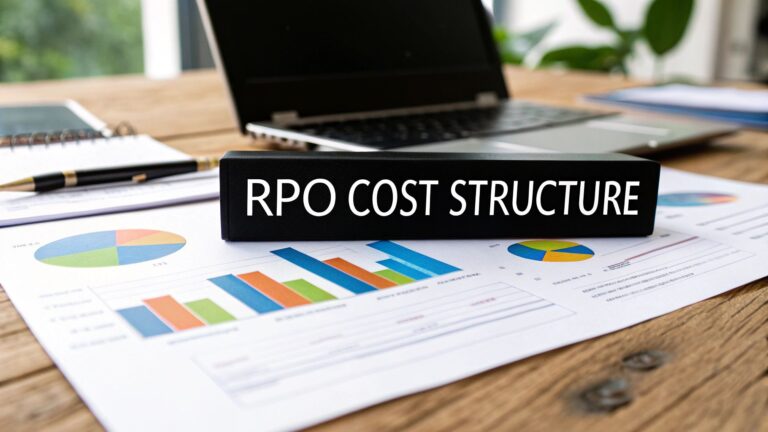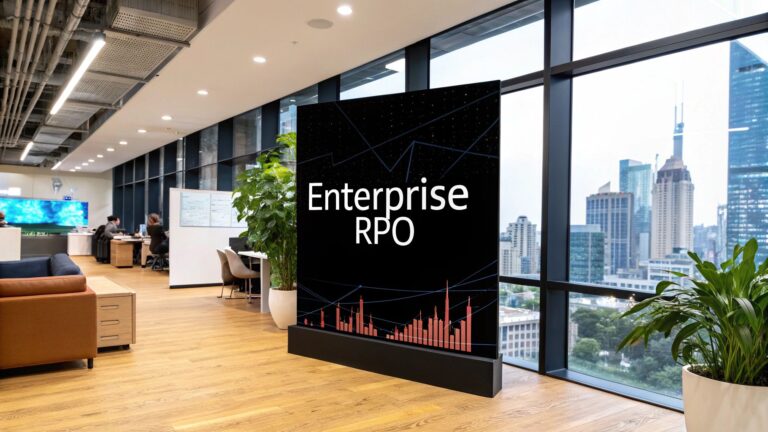Introduction
Talent management, spanning recruitment to performance, demands a technical overhaul for the digital era. Workforce planning, a data-driven approach, is pivotal for reshaping how organizations manage human capital.
Traditional talent management struggles with cohesive alignment. Workforce planning, utilizing data analytics and predictive modeling, forecasts an organization’s future talent needs. It goes beyond immediate staffing, analyzing critical skills, competencies, and technological requirements for future success. Workforce planning proactively addresses skills gaps, ensuring adaptability. Explore workforce planning’s transformative power in talent management, from AI recruitment to data-driven training. Let’s get started!
Rethinking Workforce Planning: Agility in the Face of Change!
Traditional workforce planning falls short in today’s rapidly evolving landscape. An annual talent strategy session is no match for the swift changes in the market and technology. Business leaders acknowledge the struggle, with 51% citing the challenge of adapting talent approaches quickly. To stay effective, HR and business leaders must fundamentally rethink workforce planning. It’s not about periodic sessions; it’s about continuous adaptation.
The Impact of Workforce Planning on HR Processes
Workforce planning profoundly influences various HR functions, including recruitment, training and development, performance management, and succession planning.
Recruitment: Workforce planning serves as a strategic guide for HR professionals, helping them pinpoint critical positions and skill requirements. This foresight empowers HR to attract and recruit top-tier talent, utilizing a proactive approach that builds and maintains a robust talent pipeline.
Training and Development: Through effective workforce planning and Talent Management Strategies, HR professionals can identify existing skill gaps and tailor training programs to address them. This ensures that employees receive targeted training, aligning their capabilities with current and future business needs.
Performance Management: Workforce planning facilitates the harmonization of performance goals with overarching organizational objectives. By identifying key performance indicators and competencies essential for future success, HR professionals can design performance management systems that foster employee engagement and continuous development.
Key Components of Effective Workforce Planning
- Data Analytics:
In the ever-evolving landscape of talent management, data analytics plays a pivotal role in understanding current workforce trends. The ability to harness and interpret data is a powerful tool for businesses, providing insights into the dynamics of their workforce. According to the India Skills Report 2021 by Taggd, a concerning statistic emerges – only 45.9% of the country’s youth are deemed employable.
Understanding Current Workforce Trends:
Data analytics enables organizations to analyze current workforce trends, identifying areas of strength and areas that require improvement. By delving into the data, businesses can gain a nuanced understanding of the skills and competencies existing within their workforce.
Data-Driven Decision-Making in Talent Management:
The importance of data-driven decision-making cannot be overstated. By leveraging analytics, businesses can make informed decisions related to talent acquisition, development, and retention. For instance, identifying skills gaps within the workforce can guide targeted training initiatives to enhance overall competency levels.
- Skill Mapping:
Significance of Skill Mapping in Workforce Planning:
In the context of India’s ambitious goal to contribute over 25% of the world’s workforce by 2025, skill mapping becomes imperative. The India Skills Report by Taggd underscores the challenge – a significant portion of the workforce lacks formal skill training. Skill mapping involves identifying and cataloging the skills present within the organization, providing a roadmap for talent development.
Aiding Talent Acquisition and Development:
Skill mapping is not merely a static exercise but a dynamic process that aids hiring top talent. It allows organizations to identify individuals with specific skill sets, facilitating strategic recruitment. Moreover, by understanding the skills possessed by the workforce, targeted development programs can be designed to nurture and enhance these skills.
- Succession Planning:
Succession planning is a strategic initiative that focuses on identifying and developing talent within an organization to fill key leadership positions in the future. In the Indian context, where the youth’s employability stands at 45.9%, succession planning becomes a crucial tool for building a pipeline of skilled leaders.
Integrating a Digital Recruitment Platform into workforce planning empowers HR professionals in proactive succession planning. The platform assists in identifying potential successors and facilitates the digital tracking of leadership competencies, ensuring a technologically augmented approach to cultivating future leaders and minimizing disruptions in transitions.
Benefits of Integrating Workforce Planning into Talent Management
Sharper Recruitment Strategy:
- Know exactly what skills your future workforce needs.
- Recruit with precision, saving time and resources.
Tailored Employee Development:
- Design training programs that address specific skill gaps.
- Elevate your team’s capabilities strategically.
Strategic Decision-Making:
- Base decisions on real insights about your workforce.
- Align your talent approach with your overall business strategy.
Seamless Succession Management:
- Identify and groom future leaders in your organization.
- Ensure a smooth transition during key personnel changes.
Enhanced Employee Engagement:
- Understand and utilize individual strengths effectively.
- Increase job satisfaction by aligning roles with skills.
Cost-Efficient Resource Allocation:
- Optimize your workforce based on skill distribution.
- Minimize unnecessary costs through smart planning.
Adaptability to Industry Trends:
- Anticipate and prepare for upcoming skill demands.
- Easily adapt to industry changes with a skilled workforce.
Improved Employee Satisfaction:
- Match employees with tasks that resonate with their skills.
- Cultivate a positive work environment, boosting overall satisfaction.
Efficient Workforce Utilization:
- Avoid wasting valuable skills within your team.
- Maximize productivity by placing the right people in the right roles.
Flexibility to Market Changes:
- Respond swiftly to market shifts with a skilled workforce.
- Mitigate risks by having a team ready for industry fluctuations.
Wrapping Up
Integrating workforce planning into talent management is like equipping businesses with a powerful navigation system for the modern job landscape. By using data, understanding skills, and planning for the future, companies can make smarter decisions. It’s akin to ensuring you have the right tools for a task. From hiring the right way to adapting to changes, this approach helps businesses not just perform well but also evolve and grow. In essence, workforce planning is more than a strategy; it’s the key to a resilient and future-ready organization, ensuring they have the right people with the right skills, steering them toward sustained success.









